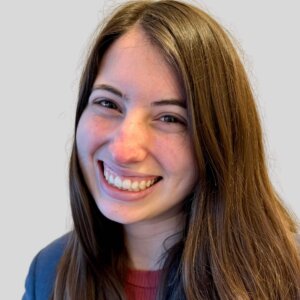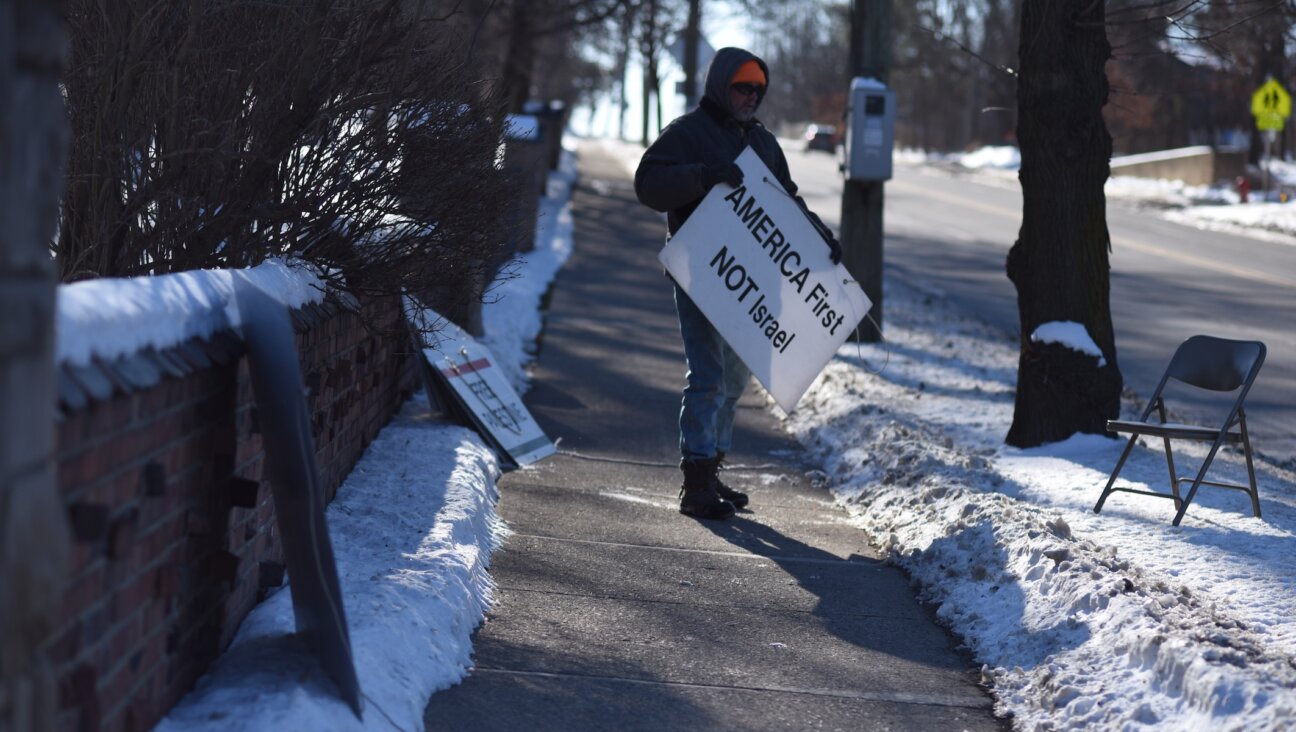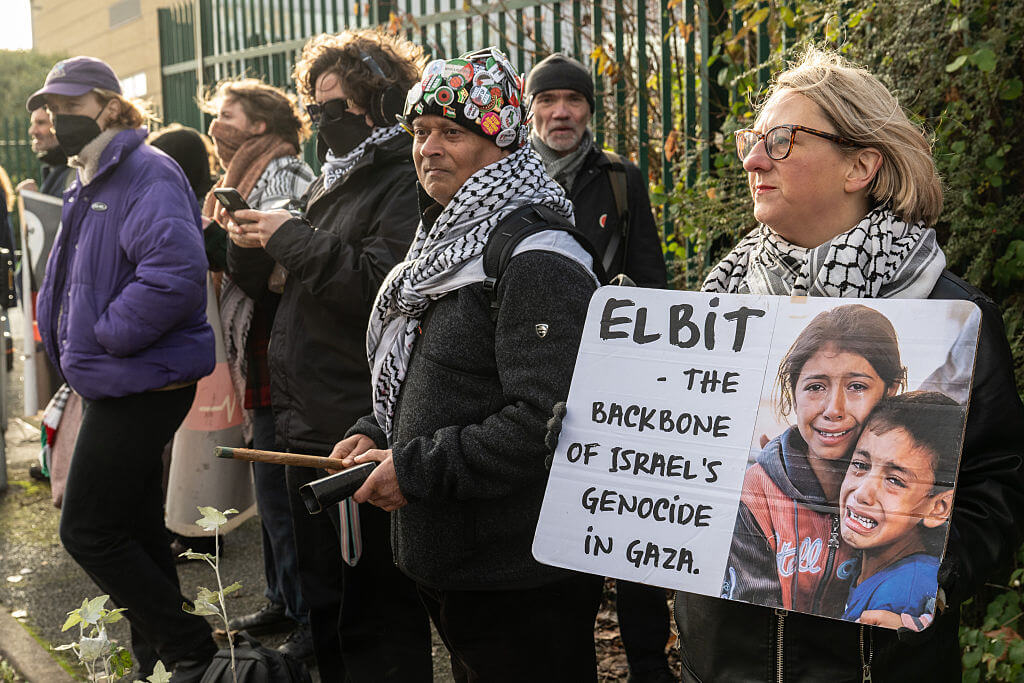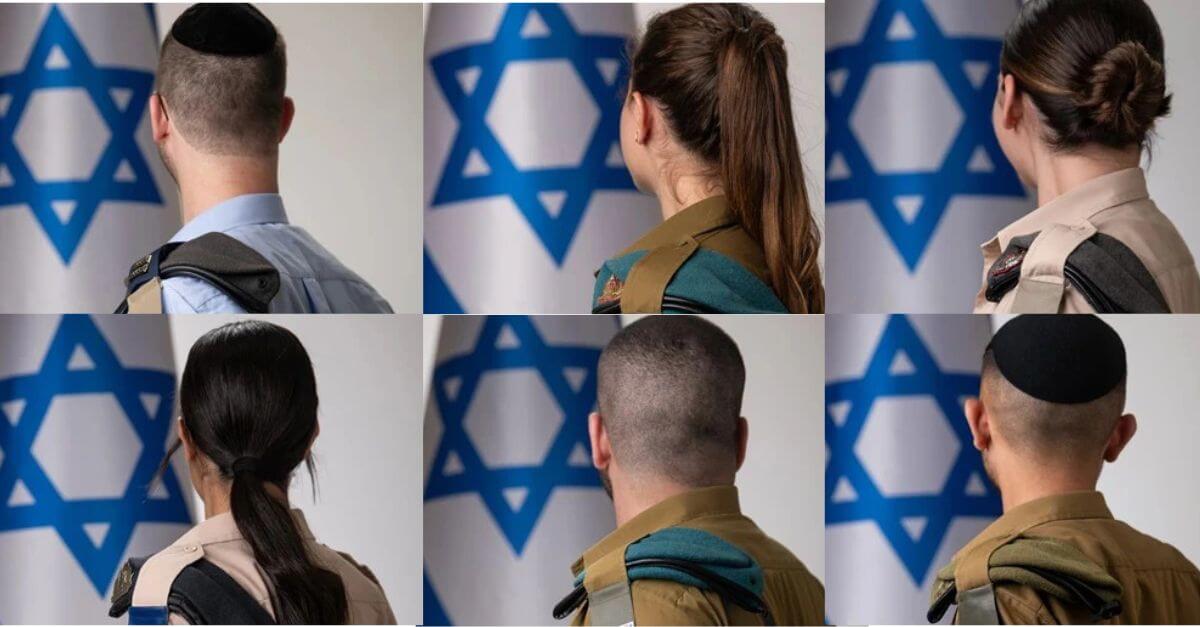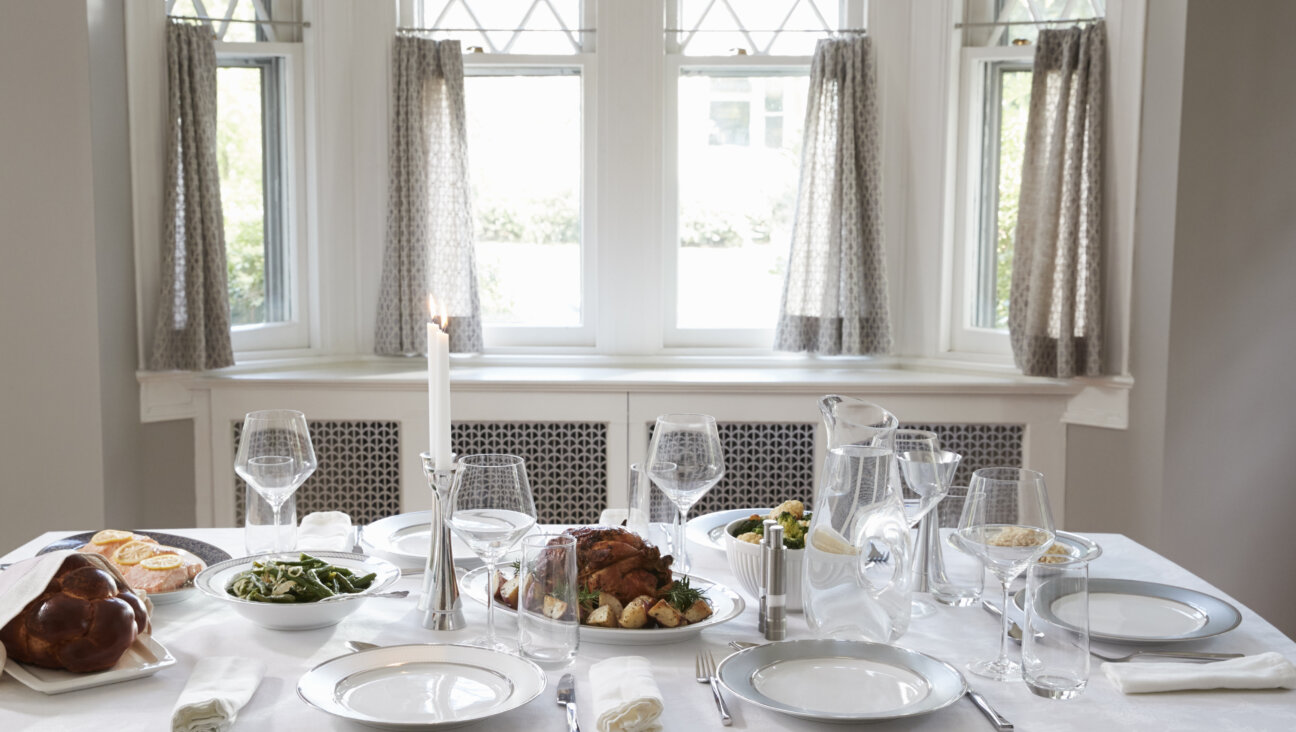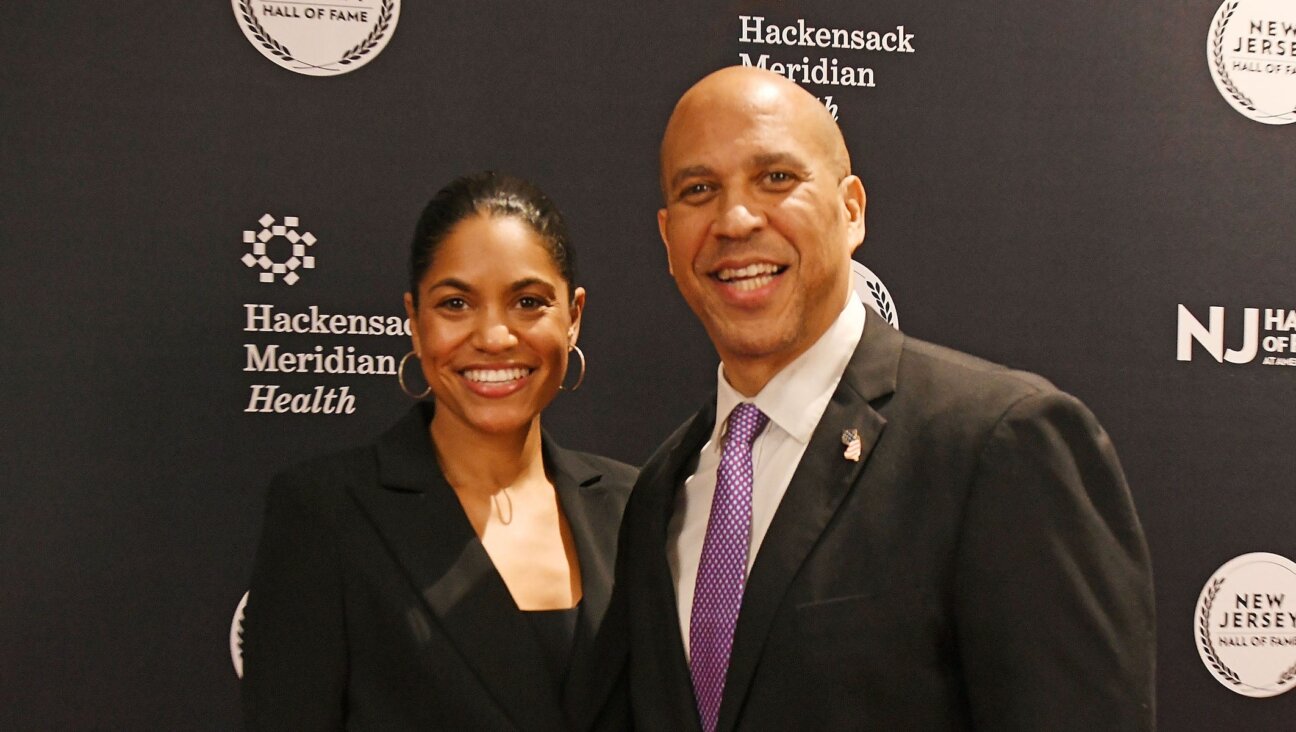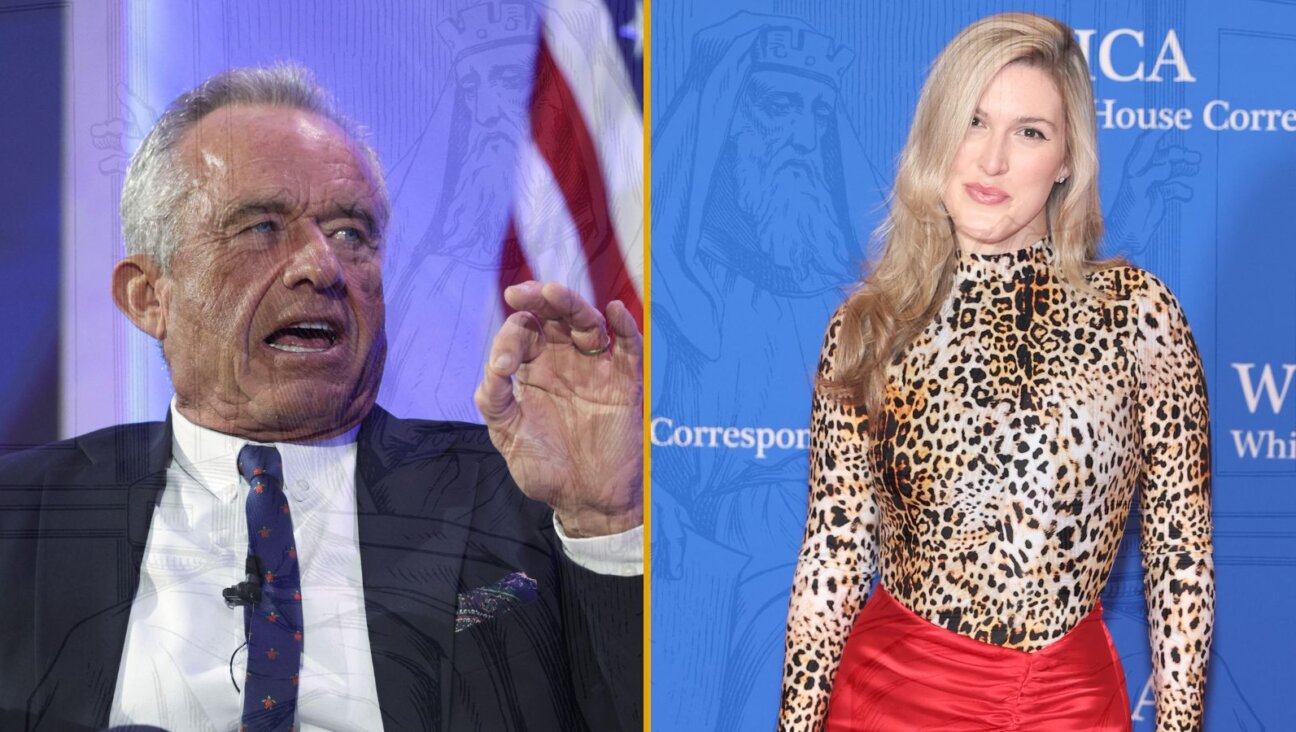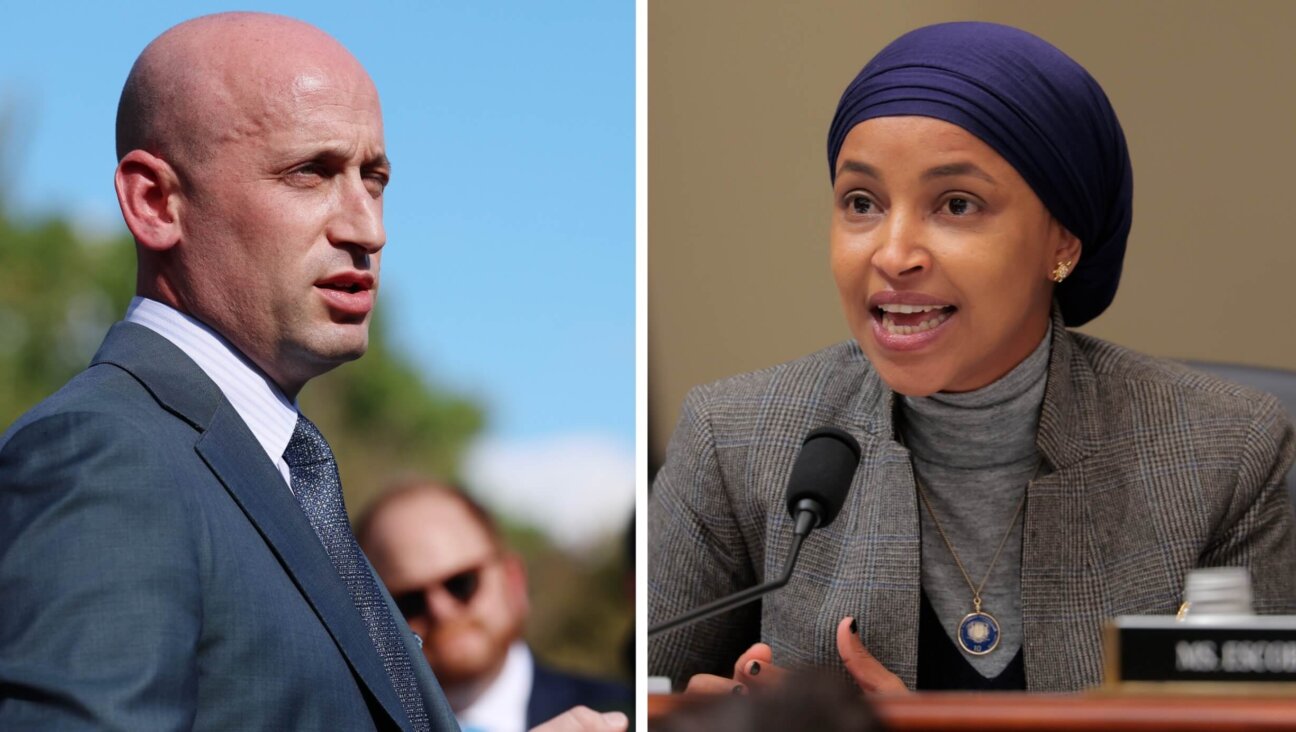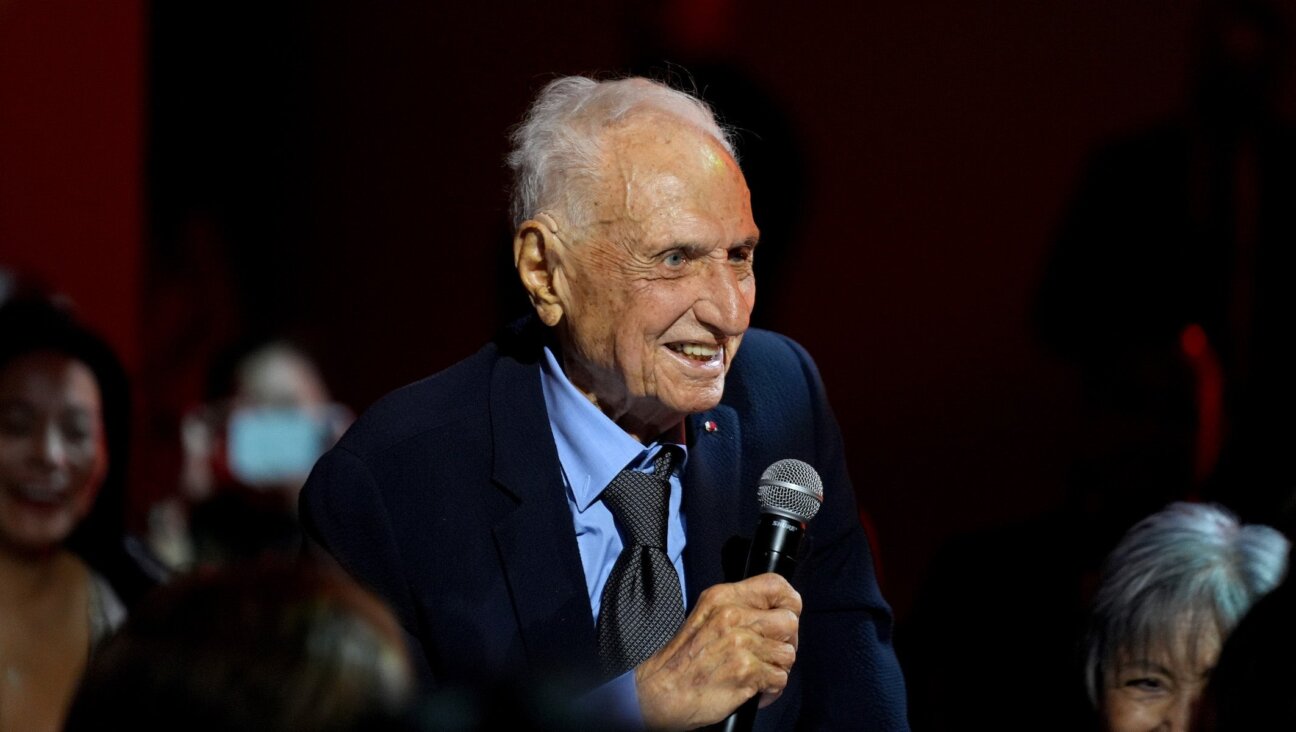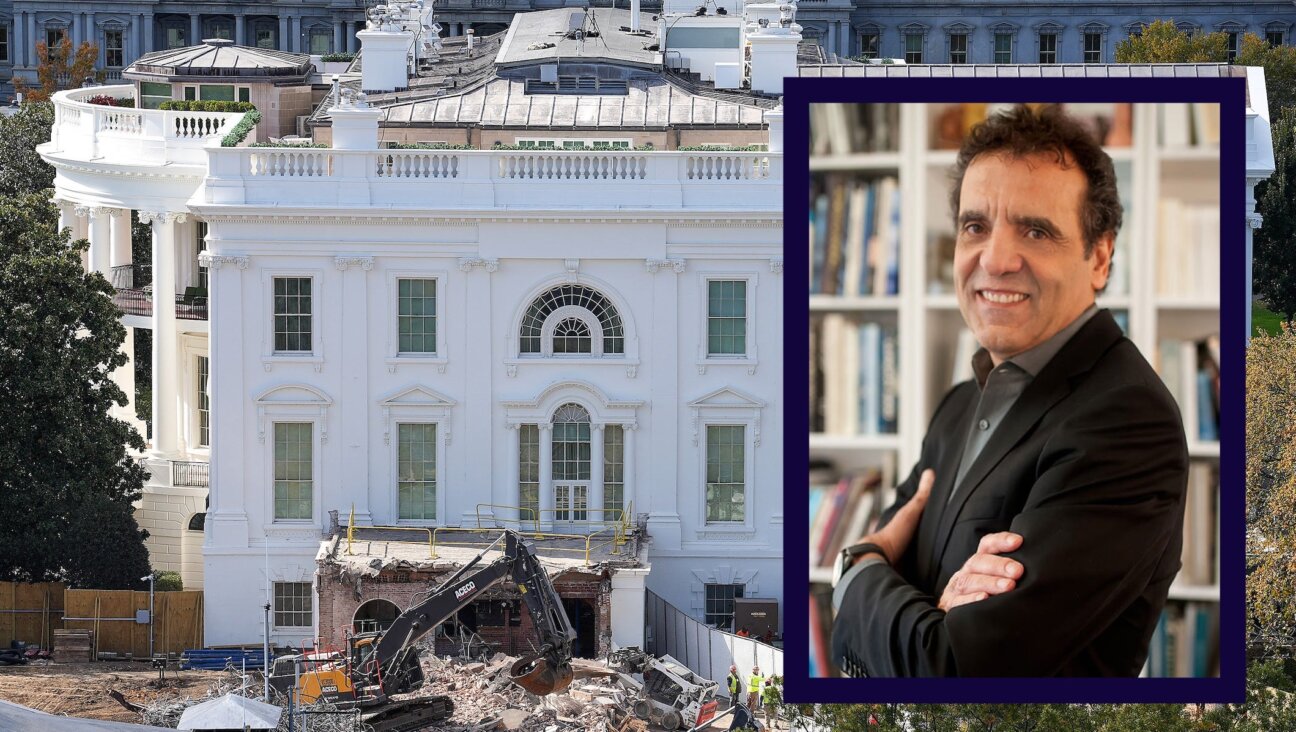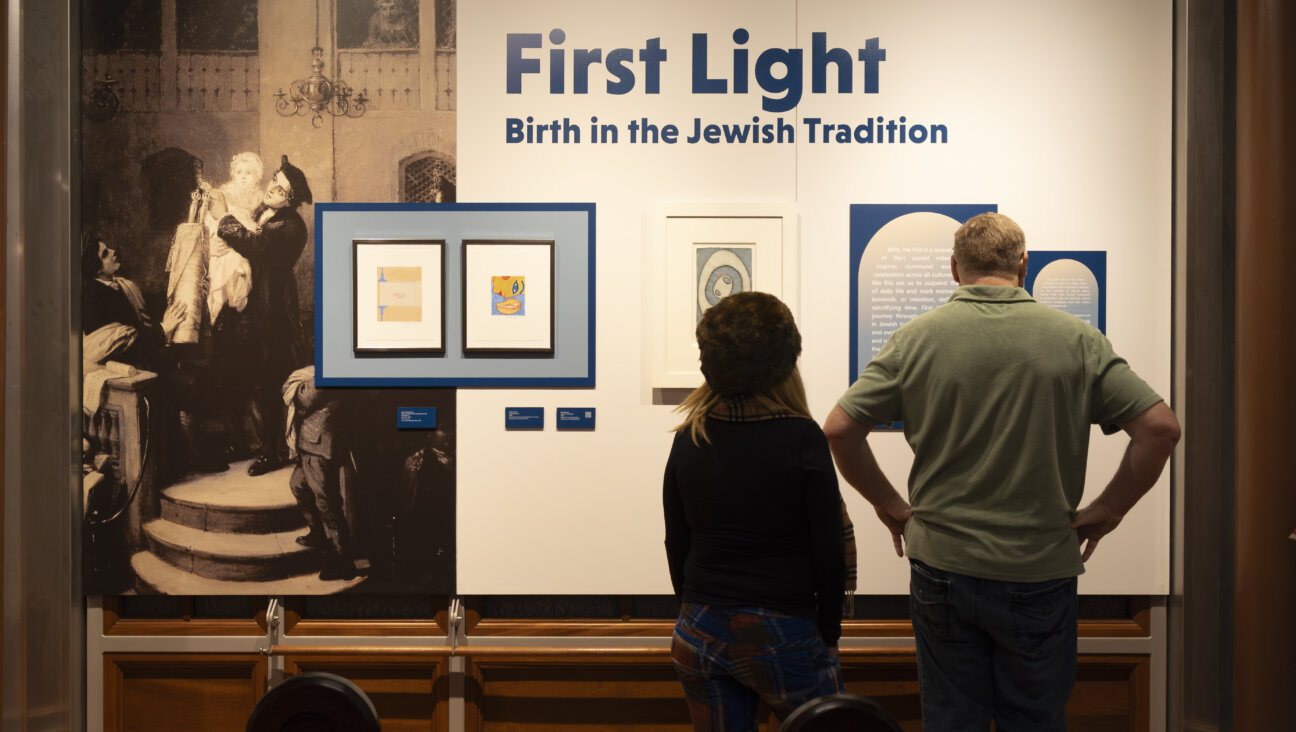Before Oct. 7, a rabbi and imam at Syracuse were building bridges. After the attacks, more students joined them.
Interfaith dialogue offered a different way forward during the war in Gaza between Israel and Hamas
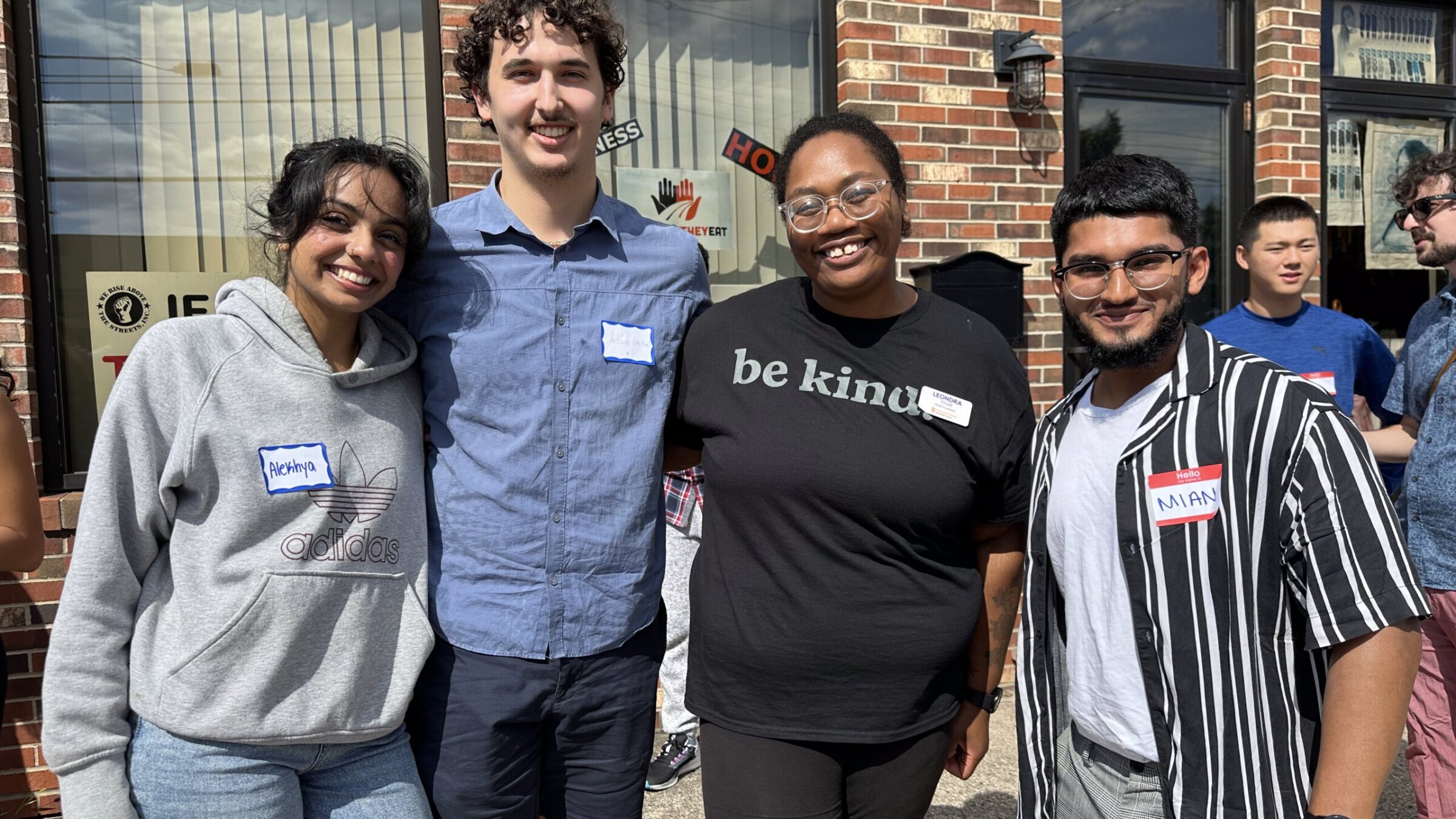
Student leaders at Syracuse University’s Interfaith Day of Service and Learning in September 2024. Courtesy of Dara Harper
At Syracuse University, Adam Baltaxe held an unlikely role: the Muslim Student Association’s lone Jewish member.
Baltaxe, who graduated last spring, was a fixture at the Muslim group’s events — eating at potlucks, attending religious services, even giving a speech at the group’s Eid celebration — while also serving on Hillel’s executive board.
His interest in interfaith dialogue began while studying abroad in Chile, where conversations with his Palestinian host mother after Hamas’ Oct. 7, 2023, attack on Israel left a lasting impression. Back at Syracuse, Baltaxe set out to recreate those exchanges.
“I started off just talking to individual Muslim or Palestinian students on campus, one-on-one. And there were a lot of times it would start pretty hostile,” he said. “And then, through conversations, actually a lot of those people ended up becoming my friends.”
Baltaxe was also a Jewish representative on Syracuse’s Student Assembly of Interfaith Leaders; an interfaith librarian at Hendricks Chapel, where he assisted students in discovering books on various religions; and a founding member of the Jewish-Muslim Dialogue Fellowship, a group of 10 Jewish students and 10 Muslim students that met weekly starting in spring 2024.
In the two years since Oct. 7, headlines have cast colleges as battlegrounds: places where Zionists are excluded from parts of campus, pro-Palestinian encampments are broken up by police, and ideological “safe spaces” shield students from encountering anyone with whom they disagree. It would be easy to assume most students have grown jaded about communicating across divides.
Yet at Syracuse, students like Baltaxe are bucking that narrative, taking part in a campus culture that embraced interfaith dialogue before Oct. 7.
Baltaxe was “one of the bridges between the Muslim students and the Jewish students. It felt really nice to have his company,” said Mian Muhammad Abdul Hamid, who was a member of the Muslim Student Association and Student Assembly of Interfaith Leaders before graduating last spring. “It just goes to show that we can model the world that we want to live in, rather than mirroring what’s going on with the rest of the world.”
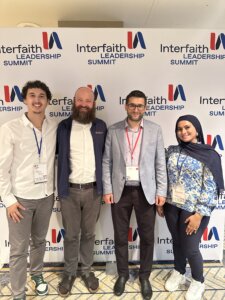
That culture, some students say, began with faculty. Rabbi Ethan Bair, Syracuse Hillel’s former rabbi, and Imam Amir Durić, a Muslim chaplain now serving as assistant dean for religious and spiritual life, became fast friends when Bair arrived at Syracuse in 2022. That year, they organized joint events like an Iftar dinner at Hillel, the evening meal that breaks the daily fast for Muslims during the month of Ramadan. By the summer of 2023, the two envisioned hosting dialogue sessions between Muslim and Jewish students, and they received a grant from Interfaith America to make it happen.
But after the attacks of Oct. 7 and Israel’s ensuing military strikes on Gaza, Durić said he questioned whether it was the right time. During such a tense moment, he wondered who would participate, and could constructive dialogue even happen?
They decided to move forward, guided by their motto to “model rather than mirror” — a choice that proved to be the right one, Durić said.
“That friendship was the key,” Durić said of his relationship with Bair. “What helped, regardless of all the challenges, was us still being friends.”
“Imam Durić sent a strong signal, saying that, ‘Well, this is the most important time for dialogue,’” Bair said. “And of course, I agreed.”
The program began as a way to share culture and religion, not to debate the Israeli-Palestinian conflict, Durić said. The students discussed their faith practices — from Shabbat to Muslim daily prayer — and bonded over the challenges of keeping kosher and halal. But as students got to know one another, conversations naturally shifted to politics.
One evening, after a dinner during which the group heard presentations from experts about antisemitism and Islamophobia, the students stayed behind for over an hour to talk about the conflict in Gaza, Durić said.
“We built this family of Jews and Muslims who could talk about anything. We disagreed a lot,” Baltaxe said. “But we all came together.”
‘A little more understanding’
Syracuse was not immune from the kinds of clashes causing turmoil at other universities. But when events threatened to deepen campus divides, connections between Muslim and Jewish students offered a path to navigate the tensions.
In October 2023, the University cited “safety concerns” in cancelling an event titled “Teach In: The Occupation of Palestine”; students held the gathering off-campus instead. The next month brought the first in a series of pro-Palestinian demonstrations, with a “Shut it Down for Palestine” rally held on Nov. 9.
That spring, pro-Palestinian protesters camped out on the quad for two weeks before voluntarily disbanding, while pro-Israel demonstrators rallied in response.
But while tensions flared, students in the fellowship quietly got to work. They helped serve as liaisons between encampment protesters and administration, contributing to a peaceful resolution, Baltaxe said.
Having connections on both sides, he said, made that work possible.
“The core of this is that people don’t have empathy because they don’t know people on the other side,” he said. “It’s much harder to empathize with people who you don’t know.”
Sadie Meyer, student president of Syracuse Hillel, also credited friendships as helping to ease conflict. As part of Hillel’s programming, she had organized a day of volunteer work with the Muslim Student Association in November 2023 and a Passover seder with the Student Assembly of Interfaith Leaders in spring 2024.
“I actually have really good friends who took part in a lot of different protests,” said Meyer, who did not participate in any. “But I respected their opinions. I heard a lot more — because they were my friends — about what they truly were trying to get out of it, and I had a lot of respect for what they did.”
Still, clashes escalated off campus when an individual unaffiliated with the University reportedly made a Nazi salute toward a group of Syracuse students and punched one. The student who was punched declined to press charges. The next day, Syracuse parent and public relations executive Ronn Torossian was arrested after confronting a pro-Palestinian protester and refusing to leave campus, according to University officials.
“There must be an emergency meeting to discuss the safety of Jews at Syracuse University,” Torossian wrote to the Daily Orange, saying it was “reprehensible” that protesters held signs with slogans such as “Free Palestine” and “From the River to the Sea.”
Most recently, two Syracuse University students were charged with hate crimes after authorities say one of them tossed a bag of pork into a Jewish fraternity house during this year’s Rosh Hashanah celebration.
“We are heartbroken and outraged by this hateful crime committed against our fraternity,” the fraternity posted to Instagram. “This was an attack on our home, our values, and our safety, as well as every Jewish student on campus.”
At times, Baltaxe also felt campus becoming hostile: He recalled being simultaneously called a “fake Jew” by pro-Israel students and and told by a friend that a pro-Palestinian student described him as a “Zionist apologist.” Still, he said Syracuse stood out for the students who remained committed to reaching across divides.
“I think we were way ahead of the curve when it came to addressing this stuff,” he said. “Obviously, there’s always going to be individual incidents, but I never felt truly unsafe.”
Duncan Green, a Jewish junior and another member of the Jewish-Muslim Dialogue Fellowship, said interfaith engagement offered him a more nuanced lens through which to process the campus unrest.
On a campus with a large Jewish population — roughly 2,500 students, or 16 percent of the student body — and about 200 students who identify as Muslim, the fellowship helped him step outside his bubble, he said.
“We didn’t solve any geopolitical age-old problems,” Green said. “But I do think that we came away with a little more understanding.”
During one of their final meetings, Green noticed the fellowship was meeting while pro-Palestinian and pro-Israel protests played out just down the block.
“I thought it was sort of symbolic that while that was all going down, we were together just having a nice lunch,” he said. “We were paving the way for a different way of going about all this.”
Durić echoed that not all 22,000 students at Syracuse were ready for dialogue. But for those who were, the fellowship offered a model. “It did serve as an alternative,” he said. “An alternative to how we can approach things that are uncomfortable, where we may disagree.”
Beyond Syracuse
The Jewish-Muslim Dialogue Fellowship continued on campus for two semesters. Its third cohort, in spring 2025, expanded beyond Syracuse University, meeting at Interfaith Works of Central New York and including students from Hamilton College, Le Moyne College, and several Palestinian American young adults who were not enrolled in college.
A few months ago, Rabbi Bair — eager to dedicate more of his time to interfaith work — left Syracuse to help develop a “bridge building” curriculum for Hillel International, which he said has already been used on several dozen college campuses. His departure means the dialogue fellowship won’t continue at Syracuse this semester.
Even so, Durić, who was promoted to assistant dean, said he expects the new imam and new rabbi to continue fostering connections between Jewish and Muslim students. This fall, they kicked off the semester with a program called “Salaam Shalom,” exploring Arabic and Hebrew words that share similar roots.
Bair also sees the fellowship as an example to be replicated. His long-term vision is an off-campus residential house shared by Muslim and Jewish students — modeled after Moishe House — where student leaders commit to hosting interfaith programming in exchange for subsidized rent.
“Jewish-Muslim bridge dialogue was not the norm in the wake of October 7 on campus,” he said. “My prayer is that this kind of work will continue more and more on college campuses — so that what we did is not an outlier, but is maybe the beginning of a culture shift.”
Editor’s Note: This article was updated to reflect more accurately Adam Baltaxe’s memory of how he was referred to by pro-Israel and pro-Palestinian students.
